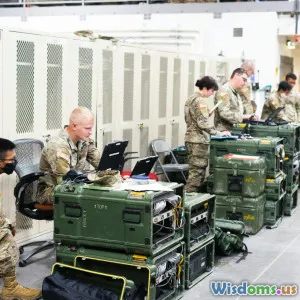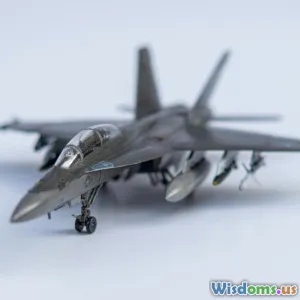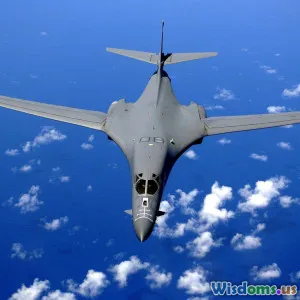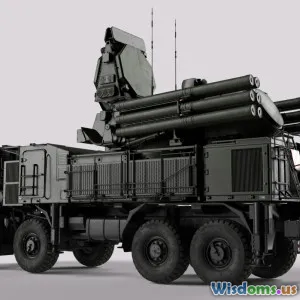
Underground vs Surface Missile Interceptors Which Is Really Safer
8 min read Explore the safety dynamics of underground vs surface missile interceptors and uncover which offers superior defense. (0 Reviews)
Underground vs Surface Missile Interceptors: Which Is Really Safer?
Missile defense is a cornerstone of modern military strategy and national security. As ballistic missile threats grow more sophisticated, nations continually refine their interceptor technologies and deployment methods to enhance survivability and response. Central to this evolution is the debate between underground and surface missile interceptor deployment: which is genuinely safer and more effective against burgeoning missile threats?
In this article, we will dissect the safety, advantages, and drawbacks of both underground and surface missile interceptors, supported by current data, real-world case studies, and expert insights.
Understanding Missile Interceptors
Missile interceptors are designed to detect, track, and destroy incoming ballistic or cruise missiles before they reach their targets. Interception allows defensive forces to neutralize threats and protect civilian populations, infrastructure, and military assets. Generally, interceptors are deployed via two key architectures:
- Surface-based: Launchers positioned above ground on land or sea platforms.
- Underground-based: Deployments within fortified silos, bunkers, or subterranean launch facilities.
The strategic placement fundamentally impacts their operational survivability and effectiveness.
Safety Implications of Surface Missile Interceptors
Visibility and Vulnerability
Surface interceptors are generally more exposed. Launchers like the U.S. THAAD (Terminal High Altitude Area Defense) and Aegis Ashore systems are positioned above ground for rapid deployment and mobility.
Advantages:
- Rapid Deployment: Surface interceptors can be relocated or rapidly redeployed to respond to shifting threats.
- Ease of Maintenance: They allow easier maintenance, launch control access, and quick loading.
Drawbacks:
- Preemptive Target: Surface systems are easily identifiable via reconnaissance satellites and drones, making them vulnerable to pre-emptive strikes.
- Limited Hardening: While some systems use armored vehicles or fortified structures, they rarely provide the extensive protection of underground systems.
For instance, during escalating tensions, adversaries could prioritize destroying surface interceptors first, neutralizing a key line of defense before missile launches commence.
Environmental and Weather Dependencies
Surface interceptors are also susceptible to adverse weather conditions. While modern systems are designed to operate in various climates, extreme storms or terrain challenges can degrade their effectiveness.
Safety Advantages of Underground Missile Interceptors
Fortification and Protection
Underground missile interceptors, such as those housed in hardened silos or underground bunkers, enjoy inherent protection against a spectrum of threats. Their subterranean placement shields them from conventional ballistic strikes, aerial bombardment, and even some forms of electronic warfare.
For example, the U.S. Ground-Based Midcourse Defense (GMD) interceptors stored within underground silos at Fort Greely, Alaska, utilize reinforced concrete and earth barriers to withstand nearby blasts.
Enhanced Survivability
- Shock Absorption: Underground structures diffuse shockwaves, reducing mechanical damage from nearby explosions.
- Stealth Factor: Burying interceptors reduces visibility and targeting by adversaries’ conventional surveillance.
This makes it exponentially harder for an attacker to preemptively neutralize missile interceptors.
Controlled Launch Environment
Launching from underground can also benefit sensor calibration and system stability, given the controlled environment.
Operational Trade-Offs: Mobility vs. Fixed Defense
Underground interceptors are usually fixed installations that require significant time and resources for construction, unlike mobile surface launchers that can adapt quickly to shifting threats. Mobility can enhance resilience by creating unpredictability but risks lower protection.
Countries like Russia operate both, combining silo-based Strategic Rocket Forces with mobile systems to blend survivability with flexibility.
—
Case Study: Israel’s Missile Defense Strategy
Israel deploys a layered missile defense umbrella utilizing both surface and underground systems.
- Iron Dome (surface-based): Rapidly deployable systems designed to intercept short-range rockets, heavily reliant on surface mobility and visibility.
- David’s Sling and Arrow systems: Incorporate underground elements and hardened launch sites for higher-altitude threats.
The mixed method exemplifies a practical approach: surface interceptors handle short-notice raids with agility, while underground setups secure strategic targeting stability.
Technological Innovations Enhancing Safety
- Remote Command and Automated Launching: Enhances safety by reducing human exposure and accelerating response times.
- Hardened Surface Launchers: Groundbreaking materials and camouflage to mimic natural terrain reduce the visibility of surface systems.
- Subterranean Missile Elevator Systems: Sophisticated underground launch shafts with rapid raise-and-launch capabilities.
Although advancements smooth some disparities between surface and underground options, fundamental tradeoffs remain.
Conclusion: Which Is Truly Safer?
Determining “safer” depends on the context of threat, strategic positioning, and design goals.
-
Underground missile interceptors excel in survivability against direct attacks due to fortification and concealment. They offer unparalleled protection against targeted strikes but at the cost of mobility and rapid repositioning.
-
Surface missile interceptors provide superior flexibility and ease of deployment, making them excellent for dynamic, layered defense systems, though they remain more vulnerable to discovery and pre-emptive attacks.
Most effective modern missile defense strategies adopt a hybrid approach, exploiting the hardened resilience of underground silos while leveraging the mobility and rapid response qualities of surface systems.
Ultimately, the safer system is the one that adapts best to the tactical environment, threat spectrum, and national defense priorities—underlining that missile defense safety is less about a single option and more about comprehensive integration.
References
- Missile Defense Agency. (2023). Ground-Based Midcourse Defense Facts.
- United States Geological Survey. Satellite Reconnaissance Data, 2022.
- Ben-David, M. (2021). "Israel’s Layered Missile Defense and Strategic Mobility", Journal of Defense Studies.
- SIPRI Yearbook. (2023). Global Ballistic Missile Investments.
- Defense Advanced Research Projects Agency (DARPA). Innovations in Missile Interceptor Deployment, 2023.
By understanding the nuanced differences and strategic applications of underground versus surface missile interceptors, defense planners and citizens alike gain insight into how nations safeguard populations against the evolving missile threats of the 21st century.
Rate the Post
User Reviews
Popular Posts



















